Judgment Day. Start. Part of 1
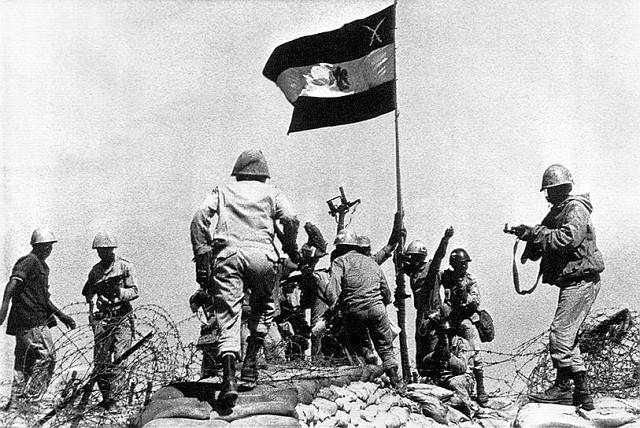
The Suez Canal has a length of 195 km and a depth of 15 m. At its confluence with the Mediterranean Sea is the city of Port Said, and where the canal waters merge with the waters of the Red Sea, there is the city of Suez, in Arabic Es Suis. From Port Said to Cairo 220 km. Halfway between Port Said and Suez, Ismailia is located on the banks of the canal. In this town, the northern part of the canal ends, and the waterway continues along the lake Timsah and Salt Lake, stretched towards Suez, from which the southern part of the canal begins, which ends at Suez. From Ismailia to Cairo 140 km.
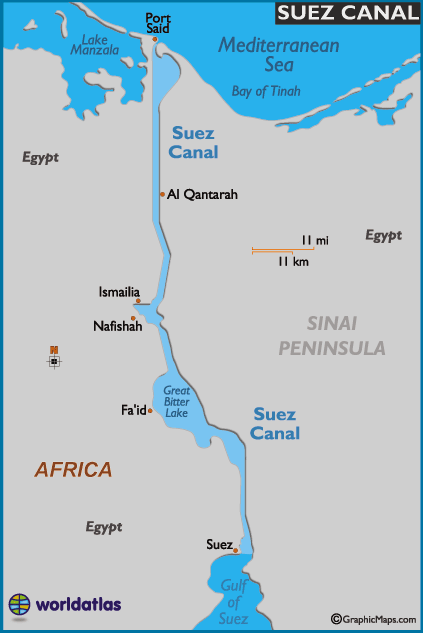
Back in 1968 — 1969 in response to the Egyptian bombing during the War of Attrition (which I already wrote about in HE in articles "Nasser starts, but does not win" и "" Caucasus "at Sinai") Israel created a chain of fortifications along the east coast of the Suez Canal. This system of fortifications was built in order to counteract the attempt of any major attack of the Egyptians through the channel. At that time, Israel believed that the Egyptians, even in the event of a full-scale offensive, could not overcome the line in less than a day or two.
In total, the Bar-Leva line consisted of 30 forward bunkers at the canal and 11 rear fortifications, carried 8-12 km deep into the peninsula, where Egyptian artillery shells did not reach and where were provided tank parks. Each of the advanced bunkers controlled its front section, and patrols moved between the bunkers and temporary observation posts were located. The construction of fortifications cost Israel a lot of money. As subsequent events showed, this money was thrown to the wind.
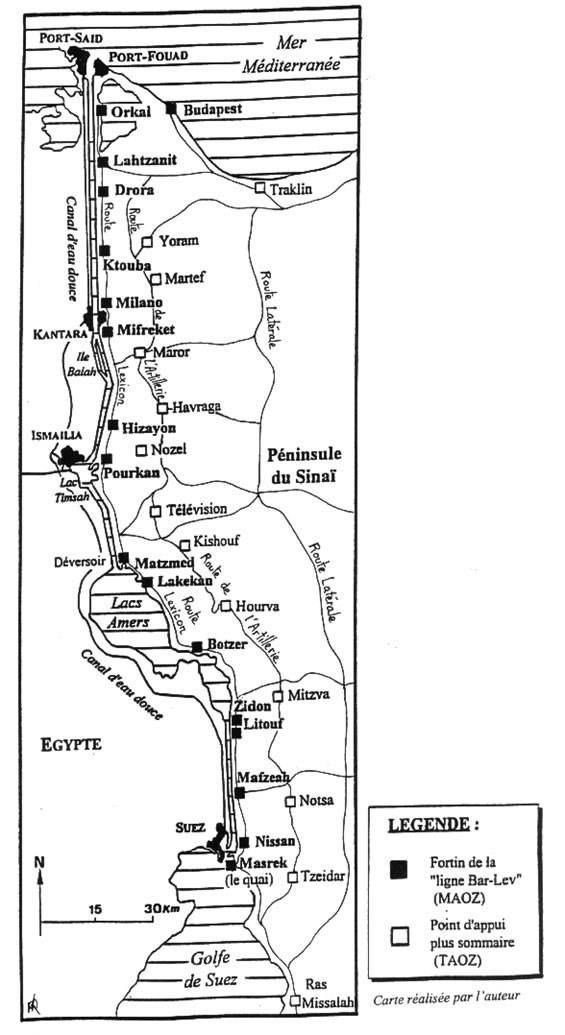
The line stretched in length approximately 160 km (more precisely: length - 157,5 km, width - 180 m). The height of the mound of sand, which had a slope of 45 — 65 °, sometimes reached 25 meters. For the possible support line was built a complex system of roads. October 6 1973 was an Israeli reservist who served 451 there (some historians have 436), many of whom, unaware, had all their feelings in the Doomsday prayers. These reservists from the 116 Brigade were, in the mass, middle-aged businessmen, store owners, university workers and government officials. Only a few of them managed to make war in 1967, most did not have combat experience. They were sent to the front line to give urgent soldiers a rest. Soldiers were located in fortifications and bunkers, which stretched from a line of points from north to south.
The fortification “Budapest” (63 man) and a small post “Traklin” (6 soldiers) were located right in the north, next to him, in the Port Said sector there were fortifications “Orkals” (three bunkers, total 47 soldiers) and “Lakhtsanit” ( 17). Further along the channel line to Ismailia were “Dror” (19), “Toba” (21), “Milan” (28), “Mifreket” (16), “Hitsayon” (20) and Purcan (33). Almost opposite Ismailia, Matsmed (33) and Lakekan (10) were built, and further, Bozer (26), Lituf (29), Maftseah (28), Nissan (20) ), Masrek (30) and the most southerly Egrofit bunker (5 soldier). From these fortifications, direct channel observation was conducted. At a greater distance from the water, tank positions “Ktuba”, “Television”, “Mitsva” and others were equipped, in which the enemy was waited for by 290 tanks. At the same time, the 91 tank was located directly on the front line, and the 199 were in reserve deep in the peninsula. Finally, 14 artillery batteries were located between the bunkers and tank positions. All these few bunkers and tanks were divided into three sectors: the northern - “Budapest” - “Mifreket”, the central - “Hitsayon” - “Lakekan” and the southern - “Bozer” - “Egrofit”. Further to the east, the sands and rocks of the Sinai Peninsula, slit by military roads, stretched smoothly into the Negev desert burned by the sun.
The Bar-Lev Line on the channel had one engineering secret. Each of the above bunkers had a small underground storage tank with a pipe leading to the surface of the water. When the enemy attempted to force the channel, the soldiers had to simultaneously open the valves, or rather press the buttons, the oil had to rush to the surface of the water, it had to be set on fire, and a flaming wall rose before the enemy. Instead of water - the river of fire. Egyptian intelligence knew about this. Therefore, on the night of the Doomsday, the Egyptian commandos secretly crossed over to the Israeli coast and sealed the holes in the pipes with cement mortar. This sabotage was not detected until two o'clock the next day, no one raised the alarm. Later it turned out that in part of the oil reservoirs there was no oil at all, it was possible not to risk it.
By dawn 6 in October, 1973 from the entire length of Suez to Port Said gathered 600 thousand Egyptian soldiers, 2000-2200 tanks, 2000-2300 artillery shells and up to 160 rocket batteries. From the air, this force was ready to cover about 500 aircraft ...
The Golan Heights cover an area of 1500 square. km This plateau stretches from north to south for 62 km, the width between the ceasefire line (1967) with Syria and the upper Jordan, which flows into Lake Kinneret (Lake Tiberias), varies between 15 and 29 km. In other words, in a tank war, there is practically no way to retreat. In the very north of Golan is the highest point of Israel - Mount Hermon (2828 m), on which, after the 1967 war of the year, the Israelis built a quick warning station, viewing and listening to the whole part of Syria from Golan to Damascus.
The northern part of the Golan stretches from Hermon down to the town of Quneitra on the old route from Acre to Damascus. Hills as high as 1200 meters in ledges descend to the headwaters of the Jordan. The southern part of the heights is lower than the northern one, on average, not higher than 800 meters, and gently descends to Lake Kinneret, which is located on 200 meters below sea level. It turned out that if the Syrians managed to break through to the first line of the Israeli defense, then they would continue to attack comfortably, from the top down.
Since there was no canal on the Syrian border, the Israelis dug a long anti-tank ditch that stretched from Mount Hermon to the Jordanian border and located minefields. (The Syrians also knew about the long and deep antitank ditch on the northern front. They thought that it would take up to an hour and a half for their engineering troops to get across the obstacle.)
The border was defended by a line of fortifications. The most northerly of them was the system of bunkers and positions on Mount Hermon around the tracking station. Next bunkers went along the line of ceasefire. Unlike bunkers on the Suez Canal, they did not have beautiful names, only numbers from 104 to 116 (on this map АХNUMX-А1).
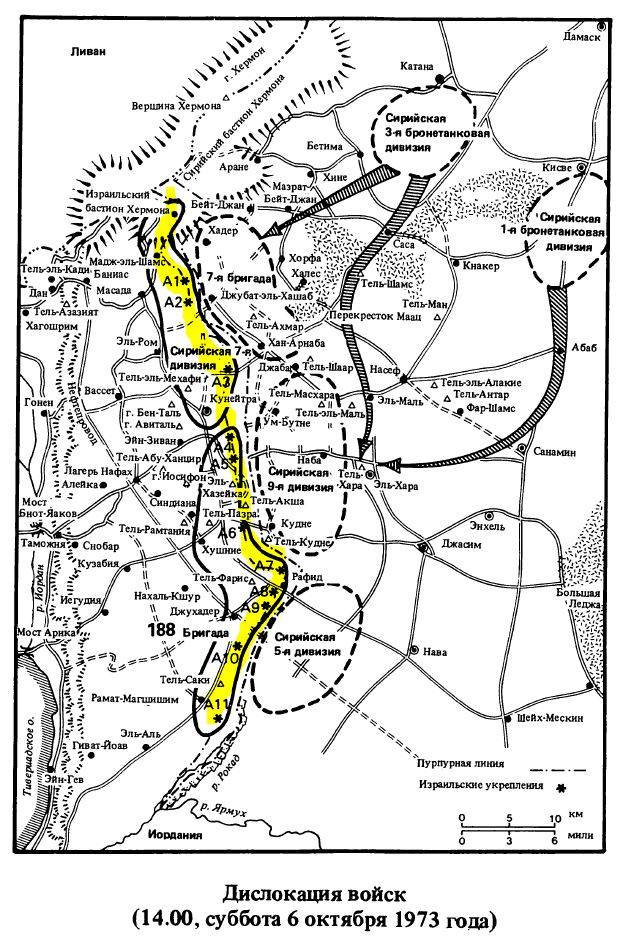
The northern road to Dan was defended by the fortifications 104 and 105, directly to the road to Kuneitra and the Banot Yaakov bridge covered the 107 bunker. At the junction of the northern and southern parts of the Golan, where Israeli positions were somewhat advanced into Syrian territory, the fortifications of 111-115 huddled tightly together. The fortification of 116 covered the road that went from the heights to the village of El Al and then crossed the Jordan already below Kinneret.
According to the geography of the Golan, the Syrian border was divided into the northern and southern military sectors. The northern sector was defended by the 36-I Tank-Motorized Infantry Division, commanded by Brigadier General Rafael Eitan.
Paratrooper Eitan, the legendary Rafuel, was already 44 of the year. In the army, everyone knew that he was brave to recklessness and very clever during special operations, but it was believed that he had no special strategic talent and military thinking. It is one thing to command a detachment of paratroopers and quite another to division. During the 1967 war of the year, he was seriously wounded in the head, and the doctors thought that Eitan would remain disabled. Surprisingly, he fully recovered. Then the officers had a joke: we had previously guessed that Raful was without brains, but now we were convinced for sure. Meanwhile, Raful completed courses for Marine commanders in Virginia, USA. He received a division in the north about a year before the war.
The commander of the 240 armored division, Major General Dana Laner, and the commander of the 146 armored division, Brigadier General Moshe Peled, got to defend the southern sector of the Golan.
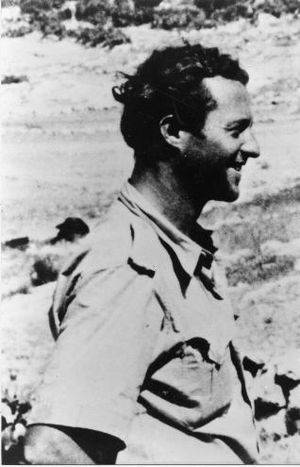
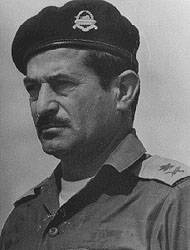
Moshe Dayan in the last days before the war slightly strengthened the Syrian direction, so the soldiers and tanks in the north were, though not in sufficient quantity for the Syrian armada. However, in addition to the three divisions mentioned above, the 7-I armored brigade of Colonel Avigdor Ben-Gal and the battalion of cadets of the tank school of Lieutenant-Colonel Memshal Carmel were in the north.
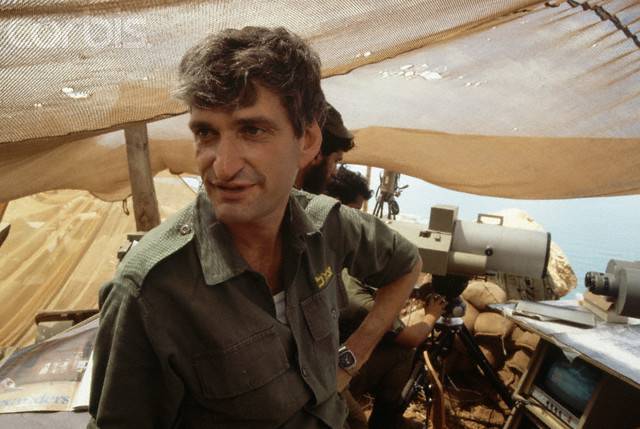
Military analysts agree that the troops on the Syrian border were staffed with manpower and technology on 80.
October 6 in 13: 55 an artillery officer on an Israeli battery on the side of Hermon viewed the Syrian positions through binoculars. He was numb when he saw the Syrians cleverly pull off the camouflage nets from their tanks and remove the covers from the gun barrels. At the same second the whistle of the first shell rang out. Further, simultaneously on the Syrian and Egyptian fronts, shelling began. All the achievements of modern Soviet military equipment made themselves known.
The shelling on the channel lasted 53 minutes. Shells plowed up all the sand on the Israeli coast. Bunkers suffered, but not badly. At the same time, on 14: 00, Egyptian airplanes flew to bomb air bases and radar stations in the rear of the Israeli forces. The first Egyptian aircraft were accidentally shot down in 14: 05. Two Israeli pilots made an ordinary patrol flight over Sharm e-Sheikh, when suddenly 9 MiGs fell on them. A desperate air battle ensued, and seven Egyptians were shot down. In the early hours of the war, Anvar Sadat’s brother, Captain Abdel Sadat, an 22-year-old military pilot, was killed over Sinai.
On 14: 07 Cairo Radio announced:
There are usually no radio programs on Judgment Day in Israel. The radios came to life in 14: 30 for a brief message: “The alarm was not educational. When the siren sounds again, everyone should go down to the bomb shelter and Beethoven’s Moonlight Sonata. In 15: 30 was followed by another drop of information: “Egypt and Syria attacked. Partial mobilization announced. ” Siren. In 16: 00: “There should be no trips for private reasons along main highways. Petrol stations immediately open. " Beethoven again. Further, in 16: 20: “Passenger transport should start working. All hospitals are prepared to receive the wounded. Only patients requiring emergency care remain in the hospitals, all planned patients go home. ” Only now the citizens of Israel began to realize that something very unpleasant had happened. Finally, a brief explanation followed in 16: 40: “The Egyptians crossed the Suez Canal and are on the east bank.” Only the next day regular military personnel began to be transferred. news. A retired general, Haim Herzog, the future president of Israel, was appointed Levitan of Israeli reports. His calm and balanced radio news and comments made a name for him.
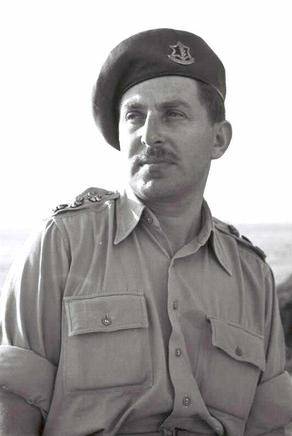
After a terrible bombardment, the first wave of Egyptian soldiers in 8000 launched boats into the water. Egyptians bravely rowed towards the Israeli coast, glory and death. Nobody interfered with the crossing. The landing took place in places between the bunkers to avoid barrage fire. Egyptian bridgeheads between Milan and Mifreket and near Hitsayon quickly formed. The Egyptian infantry was not going to attack the fortifications, but simply had to go around them and move deep into the peninsula. Egyptian military analysts on the eve of the war planned that on the first day of the fighting the Israelis would suffer losses in 10 thousand killed. 208 turned out to be really dead. It did not occur to the Egyptians that they had struck almost the empty space with all their might.
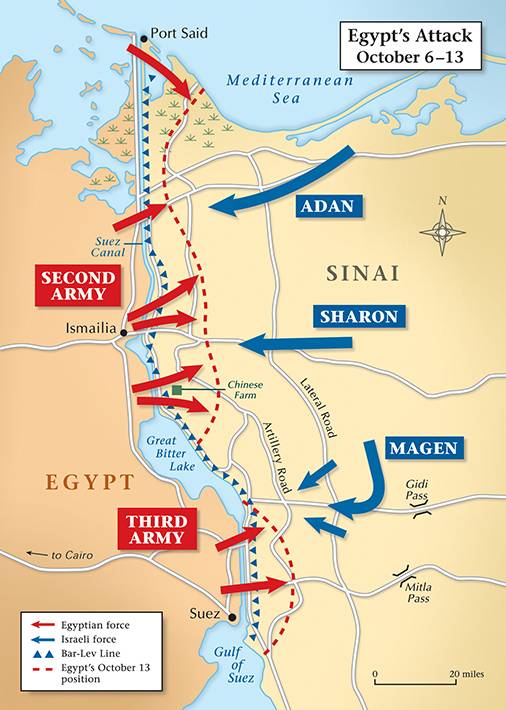
Calls for help rushed from the surrounded bunkers. One hundred Israeli tanks — a tank brigade under the command of Dan Shomron — stood on the passes of Ghidi and Mitla. By order of command, Shomron led his brigade to help out border fortifications.
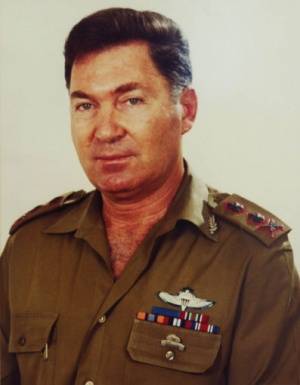
This was the impact of Soviet innovations like hand-held anti-tank missiles. Egyptian infantrymen fought Israeli tanks before the arrival of their own tanks. Of the hundred tanks, Shomron lost 77 and failed to break through to the bunkers. In addition to the missiles, the Egyptians beat Israeli tanks with Soviet RPG-7. With the help of portable missiles and RPGs, the infantry was supposed to hold back attacks by IDF armored forces for 24 hours, which were needed to build pontoon bridges across the canal and ferry tanks and artillery to the east bank. Being left on their own for a day, the infantrymen dragged with them 20-30 kg of ammunition and ammunition each. The Egyptian unit stuck a banner in the sand, and soon a forest of Egyptian flags grew on the shore.
Tanks also faced two obstacles - canal water and sand dunes right on the shore. Both obstacles were in principle surmountable, but the time factor was important. The Israelis are about to come to their senses and fly the bomb. According to the old method of pointing pontoon ferries, all the pontoons were pushed into the water, and then tugged into one line. Soviet genius invented the bridge PMP. When dropped on the water, the pontoon link automatically opens and is ready for docking with other links. The pontoons are interconnected by hinges. Instead of several hours of work, the bridges were built in half an hour. Now it was a matter of hills of sand in which any tank could get bogged down. Usually such obstacles were leveled with explosives and bulldozers, but this would again take hours of time, and the soldiers on the front lines were waiting for reinforcements. Therefore, another flash of genius invented a simple method of eroding a wall of sand with a stream of water taken directly from the canal. Powerful pumps and hoses quickly made passages for vehicles in the sand.
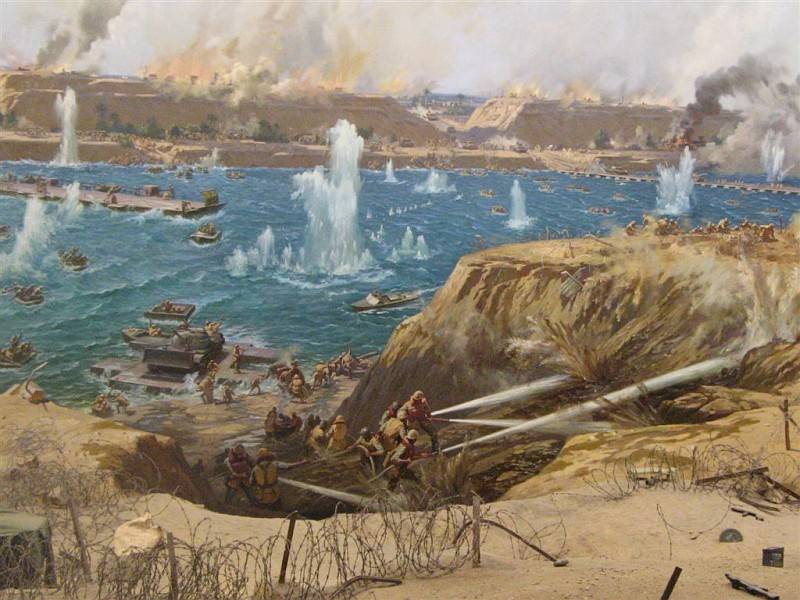
The speed of the Egyptian crossing was impressive. For 7 hours, engineering troops completed 60 passes in the sand, built 10 bridges and 50 ferries. General Ismail Ali did not need 10 bridges, but the Egyptians feared that the Israeli aviation will bomb the bridges, and put in additional ones. While the engineers showed their art, the infantrymen held bridgeheads. Here, Dayan's first mistake became clear. He believed that infantry without the support of equipment could not successfully defend themselves from attacking tank formations.
While the Egyptian soldiers were waiting for their tanks, an armored fist immediately hit the Israeli positions on the Syrian front.
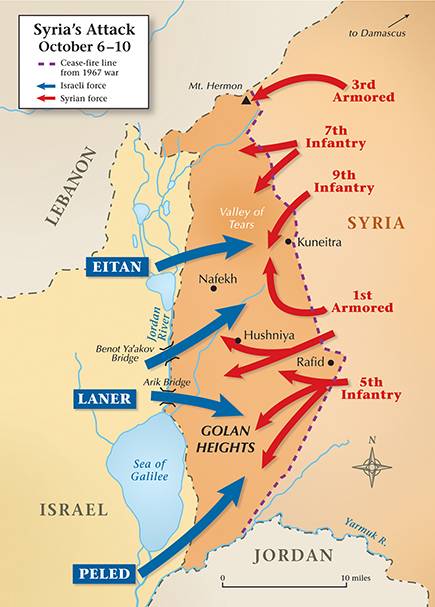
Artillery still rattled, and 650-800 tanks and twice as many armored personnel carriers with infantry rushed through the neutral zone to the Israeli side, past UN observers. The technology was so crowded that it could not turn into battle formations and was almost parade columns. The offensive impulse was so strong that the first several tanks fell into the anti-tank ditch, and only then the columns stopped and waited for the engineering units.
The commander of the IDF forces in the Golan, Yitzhak Hofi, was at a meeting in Tel Aviv with David Elazar at the time of the start of the war. He jumped into a light aircraft and rushed to the front to his headquarters, which was located in Rosh Pina and where Rafael Eitan was already waiting for him.
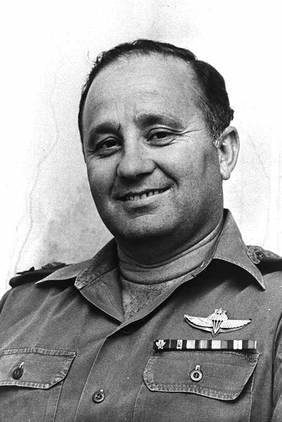
On the Syrian front, they fired 153 batteries 122 mm, 130 mm and 152 mm guns. Shells 152 mm guns flew to a distance of 12 km, and the gun itself could shoot four times a minute. 122 mm guns could shoot up to eight times a minute, and their shells flew to a distance of 15 km. Finally, 132 mm guns could send projectiles to 27 km at a speed of six rounds per minute. The Syrians managed to drive even a few batteries of huge 180 mm guns, which sent their shells at a distance of 29 km. These batteries, however, could give only one volley per minute. In other words, the entire area of the Golan Heights was under fire.
The Syrians knew that the headquarters of Rafoul was in the town of Nuffs, halfway from near-front Quneitra to the Banot Yaakov Bridge. 20 jet attack aircraft hit the village. Surprisingly, not a single bomb hit the headquarters and other divisional targets, and no one was hurt. Israeli pilots did not interfere with the Syrian pilots, and the anti-aircraft guns were silent. Despite this, the Syrians bombed very clumsily and not a single tank or cannon of the IDF was attacked by air raids. Israeli pilots first attended to the protection of their own bases. Since the Second World War, it was self-evident that a war begins with a raid on airfields, and only then on troops. In the north of Israel, there were two air bases - Tech under Haifa and Ramat-David between Haifa and Afula. Wriggling over the bases and seeing that no one was encroaching on them, Israeli fighters rushed into the sky over the Golan, and by the evening of the first day of the war Israeli patrols tried to catch eight downed Syrian aircraft in the Jordan Valley.
Still on the plane, Hofi contacted the commander of the northern sector of defense, Rafule, by radio. Hofi asked him to drive up to Mahanaim (a small airfield in the area) to immediately begin to decide everything as soon as the shelling stops and the plane lands. Raful arrived, but the shelling did not stop. The Syrian armored avalanche moved to Israeli positions, the front commander fluttered in the sky, and the sector commander shifted down at the landing strip. Controlling the front at the critical moment of the first enemy attack was in the hands of 39-year-old Colonel Yitzhak Ben Shoham, a native of Turkey and a brave professional. He commanded the 188 th elite tank brigade "Barak", which was part of the division of Eitan.
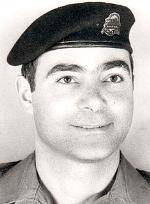
Without thinking twice, Shoham moved the tank battalions forward, closer to the bunkers, to prearranged and well-adjusted positions. Tanks stood up to support the strengthening of their guns with fire.
Here the difference in the range of aimed shooting between the Soviet T-55 and the English Centurions affected. The arrows opened fire on the Syrians, crept near the anti-tank ditch. The Israelis beat the Syrian tanks with minimal casualties. It quickly became clear that the armor-piercing shells of the Israeli army were piercing the armor of Soviet tanks. The commanders also gave the coordinates of the artillery batteries located in the rear, and the guns also joined the destruction of the Syrian technology. The Syrians began to maneuver, trying to avoid a devastating fire, and hit the minefields located in front of the anti-tank moat. In the northern sector of the Golan, the offensive almost stopped.
The Moroccans felt a weak spot in the system of immovable Israeli fortifications of the northern sector. Bypassing the bunkers that defended the Kibbutz Dan road, the 30-tank Moroccan brigade rushed into the breakthrough along this road, cutting off Mount Hermon from the rest of Israel. Since the tanks of the Barak Brigade were distributed among the bunkers in positions, the Israelis threw a battalion of cadets at the Tsenturion tank school to stop the offensive. So, after 40 minutes of war, the Israeli command in the northern Golan did not have a single tank in reserve.
After 17: 00 finally began to receive detailed reports from the fronts. The fortifications "Mifreket" and "Lakhtsanit" were the first to fall in the south. Heavy fights were fought around Milan and Orkala. K 17: The Egyptians moved 30 deep into the Sinai by 10 km towards the Guidi Pass. After the war, when the Egyptian operational plans became known, the world learned that Sadat had no idea of moving deep into the Sinai sands. He believed to take bridgeheads on the eastern bank of the canal and wait for political decisions. But two hours after the start of the war, the Israelis did not know about it. It quickly became clear that there was no mainstream of the Egyptian breakthrough, the channel was forced throughout. There were reports of some incredible number of Syrian tanks. However, in 17: 40, Hofi reported that the situation in the north was stable and the Syrians could not move forward despite strong attacks. The only serious loss in the north by this time was the fall of the early warning station on Hermon.
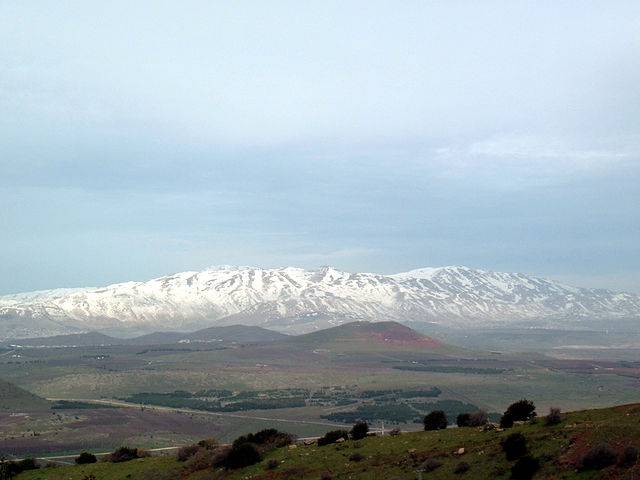
Station on Hermon called "the eyes of Israel." These electronic, antenna and telescopic eyes from 1967, looked half of Syria and part of Lebanon, all the Golan were also in full view. In good weather, Haifa was visible. In 14: 45 from the station reported on the continued heavy shelling. Soldiers hiding from shells did not immediately notice the helicopters approaching them directly. On Yom Kippur, there were 55 soldiers at the station, including guards from the 13 fighters of the Golani brigade. In 14: 55 on Hermon saw the 4 helicopter. One exploded in the sky, three landed and landed Syrian commandos. Almost simultaneously, two columns of Syrians attacked the station, moving from the bottom. Two of the three large-caliber machine guns were damaged by shells, the station’s technical staff hid in the lower bunkers, and a handful of fighters engaged in combat, having one heavy machine gun and personal Uzi machine guns. After the 45 minute battle, it became clear that the situation was almost hopeless. In addition, because of the uncoordinated command, the forces of the defenders were divided. The generator did not work, and the men sat in separate rooms in the dark. In the hours of 9 the officers gathered some soldiers and decided to bring them down. They tiptoed past the Syrian posts and hurried up the hill first to avoid ambushes and then down. The ambush could not be avoided, and by the morning the whole 11 man from 55 got to their forces. Bricked up in bunkers, they surrendered, and on the lower floor the soldiers lasted 5 days. Electronic equipment of the station was not destroyed and fell into the hands of Soviet specialists.
The nightmare of Hermon fortification was repeated on the channel several times. The Arabs ’attack on one of the bunkers of the southern sector ended with the Egyptians who had picked up after the energetic assault to the bunker door and let in a jet of flame-thrower and six defenders burned out.
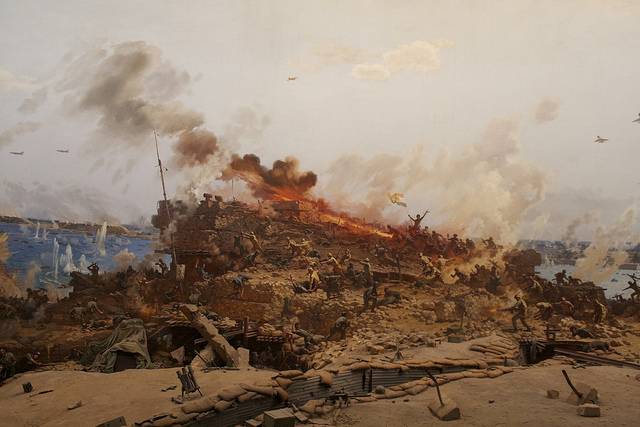
The two others crawled out through another exit, noticed two Egyptians in a jeep, strangled them with their bare hands, got into a jeep and drove away to the east. Bunker fell. After a day of fighting, there were no officers left in the fortification of “Lituf”. The surrounded bunker defenders contacted the command and asked for permission to surrender. They did not receive permits, but tanks from the Dan Shomron brigade rushed to their rescue. Tanks went astray, were ambushed. As a result, tankers and bunker fighters found themselves in captivity.
Egyptian infantrymen conducted an attack for an hour and a half on the “Yurkal” bunkers system. Israeli defense commanded by Lieutenant David Abu Dirham. The Egyptians attacked with chains, as during the First World War. Heavy reinforcement machine guns tore the entire chain at once. Attack infantrymen covered one tank. Abu Dirham had one grenade launcher with 14 grenades from anti-tank weapons. He fired all 14 into the tank, three hit the car, and the latter silenced the tank. After a day and a half of fights surrounded by, on Sunday night, the defenders of Orkal surrendered, without waiting for reinforcements. From the "Milan" soldiers brought a young officer, waving a white talit, so as not to shoot their own. “Purcan” in front of Ismailia kept 68 hours, without losing contact with the command and reporting everything that happens around. The fighters of this bunker surrendered by Sharon’s personal permission. The only bunker that lasted throughout the war was Budapest, commanded by Captain Moti Ashkenazi. Neither the attack of 16 tanks, nor the aerial bombardment, the shelling from the long-range guns of Port Said, nor the attack of the Egyptian commandos could force the encircled defenses to surrender. On the fifth day of the war, on Thursday, fresh units could break through to the bunker and replace defenders who were tired and deafened by the constant cannonade.
On the second day of the war, October 7, Israeli newspapers cheerfully informed the people that "the Israeli army blocked the advance of the enemy and launched a counterattack." Golda Meir spoke on television and reassured people, saying that "the army is ready to repel any attack." “The enemies expected to take the Israelis by surprise on the Day of Judgment. They didn't surprise us much. ” So she said. She also contacted Aba Eban, the foreign minister who was all sitting in New York, at the UN. Meir gave him instructions that it would be possible to talk about a cease-fire only when the IDF did not knock all Arabs back to their original lines. At the UN, everyone ran to Eban asking what will happen to Israel now, and Eban reassured everyone cheerfully.
Moshe Dayan also spoke on television and also said something like "our cause is just, the enemy will be defeated, victory will be ours" (c). This bravado was not true, but it was necessary for a bewildered society, which found itself in a martial law at the most inopportune moment - on the Day of Judgment, during the economic crisis and the election campaign. Meir and Dayan themselves received reports from the front, terrible as descended from the pages of the Book of Job. The first day of the fighting killed 500 people, 1000 injured, many prisoners. During the entire war of the Suez crisis of 1956, the losses were less. In 24 hours, Israel has turned from a state whose army "is the most efficient in the world, covered itself with glory and is a model for all armies," into a country that, having clenched teeth, fought desperately for life, for the very right of its existence. Dayan on the second day wanted to resign. The Prime Minister did not accept the resignation, and the Minister of Defense plunged into military affairs.
This he managed with difficulty. In contrast to the post of chief of staff, the post of defense minister is more political and economic than operatively military. The task of the Minister of War is to determine the political moment, when the intervention of the army may be necessary, the size of this intervention, arm, train, prepare the army completely by this moment and at the right time transfer this mechanism into the hands of the chief of staff. The Minister of Defense can be a completely civilian person, a politician who simply does not have to give military orders. After the retired military, Moshe Dayan, the Minister of Defense, for example, was civilian Shimon Peres. On the other hand, it was the Minister of Defense who could advise the government, on the basis of the situation on the fronts, whether it was necessary to look for ways to cease fire, or the country could afford to fight to the bitter end. At the very beginning of the war, a vacuum was formed in the activities of Dayan. Practically, he did not know what to do.
As a result, if Elazar was sitting in the bunker of the General Staff all over the maps and reports from the front, Dayan began to drive on the fronts and observe everything with his right eye. So he got to the command post of the Southern Front to General Gonen. Shmuel Gonen had no time for bravado. He said that the bunkers are surrounded and some of them have fallen, tanks cannot get through to them, there are huge losses among tanks, there are no reserves either, and there is no single front line, respectively, almost every squad is fighting for itself. In general, Pearl Harbor, Dunkirk and 22 on June 1941 of the year.
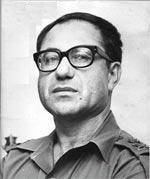
Dayan, thinking, diplomatically gave the “ministerial council”, in general, quite sound: do not cling to the fortifications, they will fall anyway. It is better to evacuate anyone else who can break out of the encirclement, and move to a new line of defense at a height of kilometers in 20 from the channel. Unfortunately, a direct order to leave the fortifications was never given by anyone.
After that, Dayan went to the Golan. It was much worse there. Reserves have not yet come. Israeli tank crews outnumbered the Syrians with a large reserve and fought from trained positions. However, the tank can not stand on the same position as sewn, day after day. Ammunition ends, minor damage accumulates, fighters get tired. If the tank moves, it also ends with fuel. Therefore, the tanks were from time to time to retreat to the rear for refueling, visiting the repair shop and replenishing ammunition. Many did not manage to go back, because the Syrians did not stop the pressure at night, and the positions they left occupied the enemy. Night vision devices gave the Syrians the possibility of a continuous offensive the whole day. With all the colossal losses suffered by inept Syrian tankers, they, like ants, blindly moved forward, and 800 tanks, even if they are clumsy, are still 800 tanks.
In the northern sector, the Syrians failed to break through the defense of Eitan’s division. In the southern sector, they were able to overcome the resistance of the Israelis in two places and flooded the Golan. I recall that the southern part of Golan after the border of individual mountains - Alonei Bashan, Paras, Tel Dzhukhadr, Tel Saki - is an almost flat area up to the slopes near the shore of Lake Kinneret. The commanders insistently called for reinforcements, the headquarters replied that reinforcements were going and begged to hold out for another half an hour, but there was no reserve. Lieutenant Boaz Tamir, wounded in the head during the first Syrian attack, commanded six tanks! On his tank in a new attack went 20 Syrian machines. In the survey sector, he could see only three tanks at a time. Blood flooded his eyes, and charging from time to time poured his face with water from a flask. He quickly chose a target, and his tank fired without ceasing. To stop for a minute would mean death.
It was this moment that Dayan found with his own eyes on the Syrian front. He understood, again correctly, that before the reserves arrived, the only thing that could help the bleeding Israeli border guards was aviation. Without losing time, Dayan contacted Air Force Commander Beni Peled and ordered him to send the main part of the country's aviation to the Northern Front.
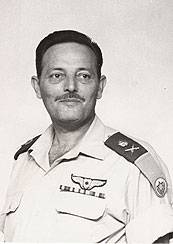
Elazar resented. Dayan as the Minister of Defense, he said, should not give orders directly to the commander of the Air Force, bypassing him, the chief of the general staff, and the commander of the front, Hofi. (The Egyptians had it easier, Defense Minister Ismail was at the same time the supreme commander.) What Hofi, a former paratrooper and parachutist, can understand in tank battles, Dayan snapped.
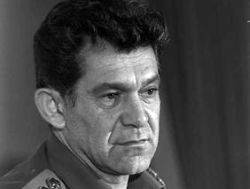
While the generals figured out the sequence of instances when the order was being passed, on the Golan land, after breaking through the Syrians, four people decided the fate of the north of Israel: Lieutenant Zvi Gringold (Zwika); Major Baruch Lenshner, Captain Moshe Vaks and Captain Meir Zamir. Zamir had 9 tanks left from the battalion, Lenshner and Vaks commanded 7 tanks, and Zviki had another Centurion 8 under him. And that's all.
Tankist Zvika, red-haired and freckled, basked at his kibbutz house when the war began. He pulled his uniform and hitchhiked to Eitan’s command post in Nafah.
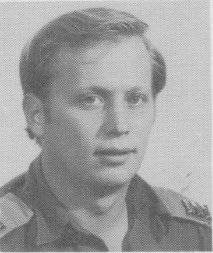
There were two suitable tanks and several undecided tankers, and these tanks were put under the command of Zwick. The order in front of the group was put to straddle the “oil road” (Petroleum Road) and watch. Zvika gathered himself a crew of tankers, whom he saw for the first time, and went to fight. As we remember from stories The six-day war, seizing the Golan Heights, the Israelis cut the pipeline, which drove Iraqi oil to Syrian and Lebanese ports on the Mediterranean. Business, however, is business, and after the war, the pipeline earned again. Israel was paid money for this “transit” and for maintaining order along the highway. Oil road just went along the pipeline from the south-east to north-west. When Lieutenant Gringold left for the road, the night came down, the first night of the war. His slave tank was lost in the dark, and the crew of the Centurion of four was alone on the road. First, they caught three Syrian tanks that were traveling with headlights on. Zwikin tank stood without lights and just shot the Syrians point-blank. Having pulled over to the side of the road, Zvika set up an ambush. Half an hour later he became cold. On the road moving 30 tanks. This was the Syrian 452 Tank Battalion of Major Ismail. For trucks lorries and armored personnel carriers. Four tankers let the first Syrian tank on the 20 m down, knocked it out and stopped the entire convoy. Zvika ordered the driver to move slowly along the column. It was dark, only burning tanks illuminated the battlefield. Single shots hit the tank behind the tank, and the Israeli tank was not visible. Major Ismail did not know that only one Israeli tank crew was fighting with him. To find out with whom he, in fact, leads the battle, the Syrian major ordered the tanks to turn on the headlights. This made it easier for Zwick. When the tenth tank broke out, Ismail ordered to retreat, never knowing that four people blocked the way to his host.
At two o'clock in the morning 8 tanks of Lieutenant Colonel Uzi Mora joined Zvika. It was decided to drive the Syrians along the oil road. Dividing forces into two columns, at Zviki - 4 tank and at More - 5, the Israelis moved along the pipeline, and then it began. Three of the four tanks were hit by missiles, including the tank itself. Contused, he jumped out of a burning tank and was wounded in his left hand. Running rushed to the last active tank of his column, and the Syrians retreated. But the night was not over yet, seven more tanks pulled up to Zvika, and they all came under his command. Lieutenant Gringold was confused. He did not have to command a compound of eight cars. Of course, they talk a lot about on-site training, but not on the first day of the war. Zvika asked to send him a commander of a higher rank, but they approved him as a commander. Now the young lieutenant decided not to tempt fate and to lead a duel with enemy tanks at a great distance. Indeed, the next attack of the Syrians soon began, and their tanks met with fire from a mile and a half. Meanwhile, the commanders of Gringold, Lieutenant-Colonel of Israel and Colonel Ben Shoham, no longer sat on the command post, and each in his tank fought an unequal battle with the Syrians. Israel fought a battle not far from Zviki, shot all the shells, rushed into a frontal attack on the Syrian tank and died.
The southernmost fortification of 116, which was closest to the junction of the Jordanian, Syrian, and Israeli borders, was attacked by the 132-th mechanized tank brigade. With colossal labor, Lieutenant Yosef Gur repulsed the attack. The last shot down Syrian tank got into 20 m from the main bunker. As soon as the attack stopped, the lieutenant sent soldiers to scatter mines at the approaches to the fortification and did the right thing. A new attack followed by the Syrians, who, unaware of the mines on the field they had already passed, lost several tanks. In this battle, Lieutenant Gura did not support divisional artillery, and his soldiers managed to incite tanks from an 81-mm mortar. Gur then ordered to scatter mines around the perimeter around the fortifications and again did not lose. The Syrians went around and hit mines again. The 116 bunker survived.
Heavy fighting went around the 111 bunker. All officers died or were injured. The defense of the whole position was commanded by the energetic private Ezra Zion. Tanks around the bunker commanded by Sergeant Daniel Berkovich. All the wounded tankers and infantrymen were demolished in a bunker. Berkovich contacted the command, asking to urgently evacuate the wounded. One armored personnel carrier managed to break through the Syrians' fire to the fortification, but the way back was cut off. Then Berkovich received permission to withdraw all forces to the rear and leave the bunker.
Behind this fortification was a very important T-shaped road fork. From it, the road to Quneitra went north, the road went to the bleeding 113, 114 and 115 bunkers, and to the west, right inland, led the highway to Arika Bridge. Having broken through the Israeli defense, Syrian Colonel Hassan Turkmani slipped this fork in a roll to the west, reached the next northern road and turned his 9-th infantry division to the Rafula command post in Nafah. Major Abdulla Kablan commanded a tank battalion on the point of attack of the division of Turkmani. He hit a minefield, and his tanks with mine rollers were already hit. After consulting with Turkmani, Kablan led his tanks into a minefield. Almost all of his tanks exploded, he himself miraculously managed to jump out of his dying car. Turkmani watched the death of the Kablan battalion. The path was clear, and his division rushed forward.
Now on the way of the whole Syrian division stood seven tanks Lenshnera and Vaksa. They could not hold off the attack of the troops of Turkmen, and the Syrians attacked Nafah. Wax died. At the end of the battle, Lenshner had two tanks left. In addition to the command post of Rafulya, there was a hospital, kitchens, repair shops, ammunition depots and other logistical units of the Eitan division in the Nafah military camp. There were no combat troops in Nafah.
Realizing that the Syrians were about to break into the rear of his division, Eitan ordered Colonel Ben Shoham, the commander of the Barak tank brigade, to move with his tanks, including Zvik, to Nafah. Ben Shoham did not have time to execute this order. His tank was in 300 m from the barbed wire perimeter of Nafah. The smoke from the destroyed tanks covered the review, and the colonel leaned out into the upper hatch to direct the battle. He was killed by a Syrian machine gunner. Zvika lost his commanders, his radio was silent. Neighboring tanks were hit. After some thought, he drove off-road to Nafah.
To command the defense of Nafah fell, on the orders of Eitan, Pinchas Kuperman. He was in the rank of lieutenant colonel, but was the assistant manager of the frontier brigade. Eitan led the entire front of the cracking seams. He had no time to transfer headquarters to another place. He ordered to collect all the infantrymen who fell, and to organize defense around the perimeter of Nafah. Kuperman assembled, as they later joked, a “squad of cooks and bakers,” handing out recoilless anti-tank guns to them and distributed them to positions. The bakers fought the 91 th Syrian tank brigade, equipped with brand new T-62. Like all other fights, this fight was unequal, but behind the bakers of Kuperman, there was no one up to Jordan itself, Nafah was in the rear. When the Syrian tanks broke into the camp, Eitan commanded the staff officers: “Guys, we are leaving,” and jumped out. At that moment, the T-62 was already moving to headquarters. Eitan grabbed a bazooka and knocked out a tank. He watched the evacuation of the headquarters when he pulled another T-20 from him in 62. In full speed, Rapoulus rushed to the last jeep, which had already been deployed by another officer, jumped into it on the move. Another three broken machines remnants of the garrison removed from Nafah.
Meanwhile, Zvika was brought up to her camp on his tank and several other crews. Twenty hours had passed, as Lieutenant Gringold set off from the rear of Nafah for the battle, and now the camp presented itself to him as the whirlpool of death. Everything was burning all around. The driver of the Zvikin tank was so frightened that he jumped out, jumped into an abandoned armored personnel carrier and sped off from the camp. Zvika remained to fight in the immobilized tank and miraculously survived. The camp was saved from the defeat of the 72 Infantry Battalion of the Golani Brigade (Lieutenant Ephraim Fein), a fresh reserve that was finally in the right place at the right time.
The connections of Col. Orr were also tightened. Zvika got himself a new tank and continued the battle, already completely exhausted, not sleeping for more than a day and with untreated wounds. By five o'clock in the evening of the second day of the war, Eitan was informed that Nafah was able to defend. The further advance of the Syrians from the south to the north of the Golan, to the rear of the Raful division, was halted.
When the battle around Zviki died away, he suddenly found himself standing in the turret of the fifth tank of his own; being completely unable to concentrate. An intelligence commander of the Barak brigade rushed to him, who, after the death of the commander, carried out his duties. Almost in lethargy, Zvika, burned and wounded, slipped from the tank into the officer's hands. Zviku was sent to the medical evacuation center. The contribution of this man with an iron will to the disruption of the Syrian offensive is colossal. Never before has a tank driver managed to destroy so many enemy tanks in one battle. Military historians agree that Zvi Gringold destroyed T-60, T-54 and T-55 tanks to 62 a day. Zvika himself recalls that during the night from 6 to October 7, the three tanks he successively commanded, spent a total of three ammunition, while the Centurion tank had the ammunition equal to 72 shells. For his feat, Zvi Gringold was awarded the highest Israeli military award - Itur ha-gvura (Medal “For Heroism.” In total, 1970 people were awarded such an award from the date of its establishment in 40 in Israel. 16 of them posthumously.)
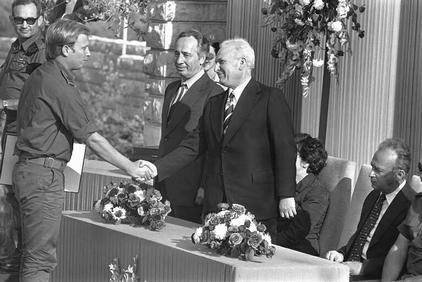
While there were battles for every meter on the Golan, on the channel the Egyptians calmly transferred the division after division to their Israeli coast from their 800-thousandth army.
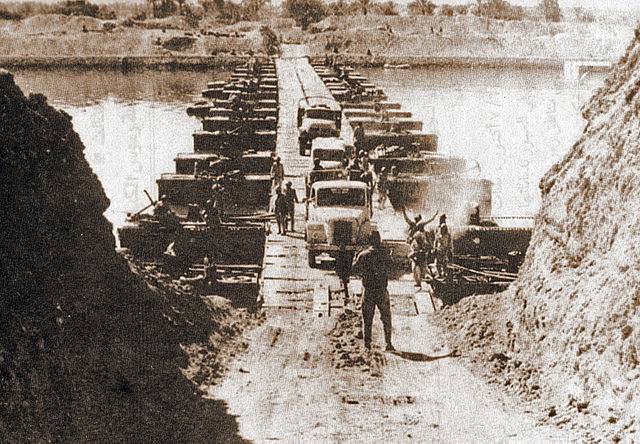
The Northern part of the front, above the Salt Lakes, was held by the Second Egyptian Army, and the southern part, below the lakes, by the Third Army. In the first two days of reinforcement battles, the front commander, General Gonen, was received very poorly, every new 10 tanks were registered. Finally, on the third day, a relatively significant number of armored troops gathered in the south on Monday, and Gonen made a fatal mistake that extended the war by two weeks - on October 9 he threw fresh tanks into an ill-conceived counterattack. Affected by "the syndrome of the seventh day of the Six Day War." Yesterday we simply did not have mobilized troops, but today we have reserves of profit, and now we will show them. However, there were not enough reserves for a massive tank attack. It turned out that instead of a tank fist tanks were used to plug gaps in small inefficient groups. As a result, the IDF lost 200 tanks in local skirmishes just in the first days of the war.
Israeli doctrine implied frontal tank battles. The Soviet doctrine, which was followed by the Egyptians, suggested that the tanks could be met by well-established infantry, and their own tanks engage in battles after the enemy’s tank forces were drained by infantry and artillery. In general, remember the Kursk Arc. Egyptian infantrymen, well equipped with anti-tank weapons, stopped the Israeli tank attack with their guided missiles. After all, it has been known since the Second World War that it is impossible to attack the entrenched infantry with tanks without the support of their own infantry. This time there were heavy losses on the Southern Front. Israeli tank crews later recounted how they were struck by the sight of hundreds and thousands of Egyptians running in the sand in columns: "We had the impression that we were fighting with the Chinese." The whole IDF tank brigade was almost destroyed.
Meanwhile, 500 Egyptian tanks crossed the Israeli coast. Israeli aircraft tried to bomb the pontoon ferry across the canal to prevent the Egyptian armored divisions from reaching the peninsula. Egyptian rocket engineers, however, shot down too many planes, and the pontoons were restored quickly, and the transfer of troops could not be stopped. On the northern front, the pilots also suffered heavy losses from missiles, which covered ground troops. Seeing that direct air attacks on tank columns turned into suicidal measures, the Israeli pilots changed tactics. They began to fly over the territory of Jordan, make a U-turn and attack rocket launchers from the rear. It took more time, but losses among flight crews fell sharply.
On the Egyptian front only at noon Sunday Ariel Sharon managed to assemble his reserve division. He was already "pleased" that there was no one else between his troops and Tel Aviv. At one o'clock on the second day of the war, he was given command of the central sector of the Egyptian front. Personal weapons Arik had a Kalashnikov assault rifle, AK-47.
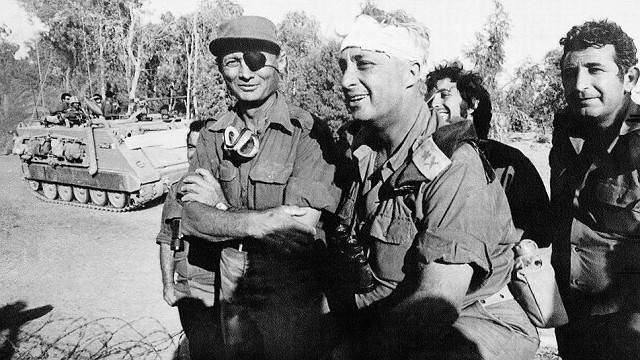
Almost all the authors who wrote about the military side of the case during the 1973 war of the year note tensions between Sharon and Gonen. Sharon himself wrote about it in his memoirs. The essence of these troubles boiled down to the following. In the Israeli army, officers and generals at that time were retiring early, in 40 years. Sharon was retired for a short time in 1973. He still remembered how he commanded Gonen a year ago. Now the younger Gonen became the front commander, and Sharon, who was drafted from the reserve, became the division commander on that front, nominally subordinate to Gonen. Psychologically, both were uncomfortable. After an unsuccessful counterattack started by Gonin, Sharon did not hesitate to make critical comments and his own proposals. Dayan and Elazar preoccupied with this personal conflict and sent another retired general to the Southern Front, and now Minister of Trade and Industry Haim Bar-Lev as, as they would say in the USSR, a representative of the Stavka. Bar-Lev was supposed to smooth out sharp corners.
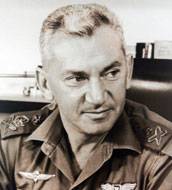
After the 8 - 9 troubles of October on the Southern Front, the Israelis stopped counterattacking and waited for what would happen next. The Egyptians, settling on the east bank, did not rush further into the depths of Sinai. The days of October 10-12 passed practically without fights. This made it possible for the Egyptians to assemble up to 1000 tanks on the Sinai.
When the IDF reserve units were moving along the roads of the Golan to the front line, they were met by retreating, retreating to the bridges, retreating, burned soldiers in tattered form, often without weapons, completely dusty and lost. No one has ever seen the IDF fighters in this form. At the bridges across the Jordan they were collected, brought to life, re-equipped and armed, fed and sent back into battle.
On the second and third days of fighting, the affairs of the Golan were still very bad. From the tank battalion commanded by Major Shmuel Askarov, three tanks remained, which divided the 69 of the last shells among themselves. Askarov ordered the driver to drive his tank on off-road speed. He hoped that the enemies of clouds of dust will be taken for the approaching reinforcement. The first Israeli reservists, who came to the aid of the southern sector, found themselves in the Shermans of the Second World War. They were attacked by T-62, still smelling factory lubricant. Surprisingly, the Israeli reservists won the fight. When they then inspected the padded T-62, on some of them the mileage was only 50 km, they were taken to the battlefield on tractors without running in.
Overcoming the difficulties of the first hours, the Israeli pilots began to more successfully attack the Syrian tanks. They poured them with napalm, burning at once the whole group. By mid-Monday, through the 48 hours of fighting, Israel lost an 250 man in the Golan. An unusually large number of casualties were among the pilots, all due to Soviet-made anti-aircraft missiles that had been tested in Vietnam. Israeli pilots had never met with Soviet Strela missiles and did not know how to get away from them. The experience did not come immediately. In just the first week of fighting, Israel lost up to 80 aircraft, and on the Syrian front, twice as much as on the Egyptian one. Almost all the planes were shot down by rockets. In air battles, Israeli pilots almost always emerged victorious. On the Egyptian front, casualties among the pilots occurred every time the Israelis flew to bomb pontoon ferries across the canal. Broken pontoons were quickly restored, and the flow of Egyptian troops to Sinai was not interrupted.
Beginning with 9 October, due to the incessant Syrian pressure on the entire Northern Front and the desperate position of its defenders, Israel decided to strike at Syria altogether. The planes flew to bomb Damascus and industrial facilities throughout the country. In addition to the situation on the front, there was one more reason for this. One of the Soviet-made missiles launched from Syria hit the houses of the Gibat kibbutz, near Nazareth, and destroyed 12 buildings, including a kindergarten. No one was hurt, as everyone was in a bomb shelter, but the fact itself made the people flinch.
At noon on Tuesday, October 9, six Israeli "phantoms" appeared over Damascus. They attacked in three waves, aiming rockets at the Air Force headquarters building and the Ministry of Defense building. Both buildings were destroyed. Since the Syrian Ministry of Defense was located in the diplomatic quarter of the capital, Norwegian and Indian diplomats were killed. In total, about 200 people died in Damascus. After that, the planes began to bomb oil refineries and oil depots in Homs, Adra and Lattakia and destroyed them. Then it was possible to destroy the power station near Damascus and Homs. Finally, the worst blow followed - the Iraqi oil terminal on the Syrian coast of the Mediterranean at Baniyas. The operation of this terminal alone brought the impoverished country up to 40 million dollars a year, big money in 1973 year. It also got airfields and bridges. Just in case, they bombed the Lebanese radar station on Mount Jabal el Baruch.
In the meantime, the whole country once again switched to war rails. In the cities, blackout was introduced. The remaining buses stopped going to 6 evenings. Donors lined up at the hospitals. Schools were closed on October 7 and 8, but then reopened. International airlines suspended flights to Israel, but El Al stood the schedule of all flights. Airplanes were crowded. All Israelis rushed home to fight. When boarding a plane, preference was given primarily to reservists, then doctors followed, followed by journalists and television correspondents. A mobilization center was deployed at Lod International Airport. Men could immediately leave their suitcases, get a uniform and a mobilization order and go to the front, without going home.
And it came to Golda Meir that Abba-Eban was, by the will of fate, just in the most strategically important place for the foreign minister - at the UN. She called him on October 8, on Sunday, and told him to go home from New York not to hurry, but rather to stay in America in case of quick action in the Security Council. Eban stayed. And here he is sitting in a crowd of diplomats at the TV in the UN, everyone is watching a military chronicle from Damascus, and to his dismay, Eban sees footage of dozens of prisoners, skinned and wounded Israeli soldiers sitting on the ground, hands behind his head.
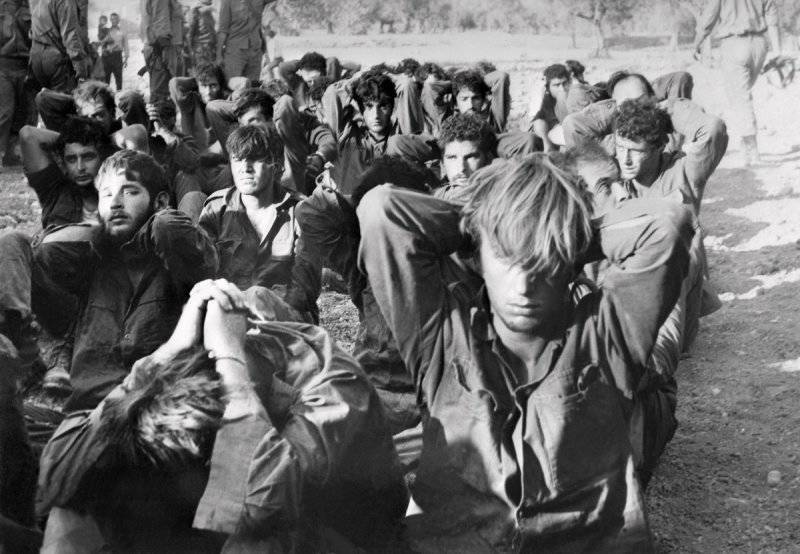
He was ashamed. Yet around him it was thought that Israel would repeat the 1967 miracle of the year ...
To be continued.
For those interested in the topic of a ten-minute film from the documentary series "Battle of Empires."
Sources:
M. Shterenshis. Israel. The history of the state. Xnumx
ARABO-ISRAELI WAR OF 1973 OF THE YEAR. Chronicle of events on historical documents.
Duke H. Arab-Israeli Wars: From the War of Independence to the Lebanese Campaign. T.2., 1986.
Arab-Israeli wars. Arab look. 2008 et al.
Color illustrations - fragments of the October War Memorial diorama from Cairo.
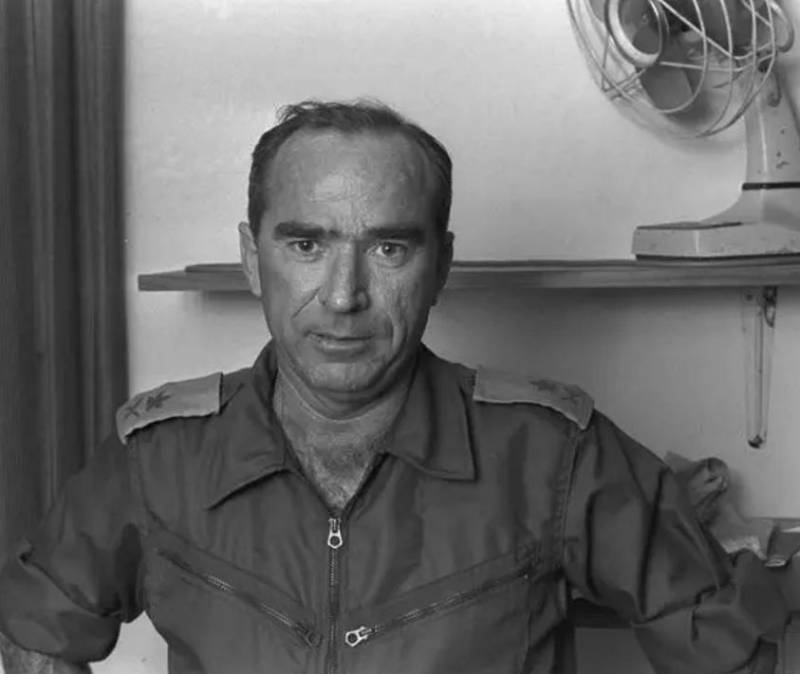
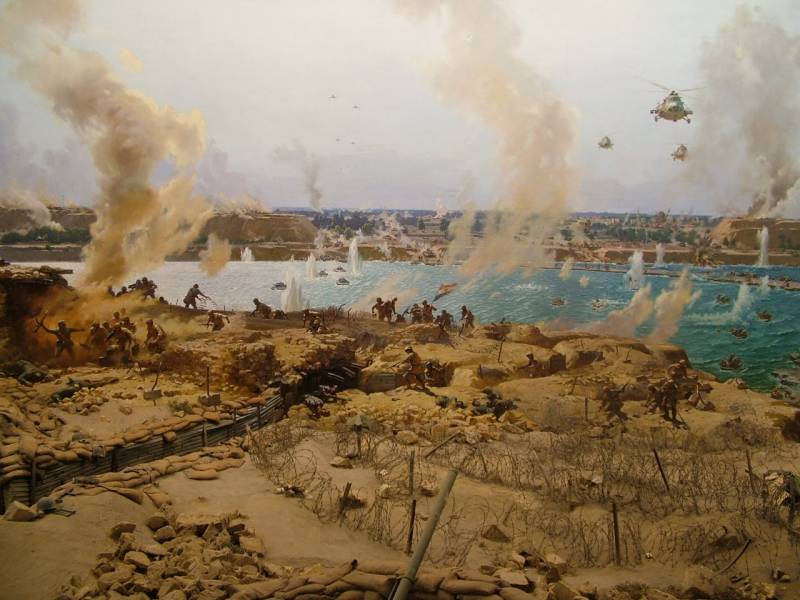
Information